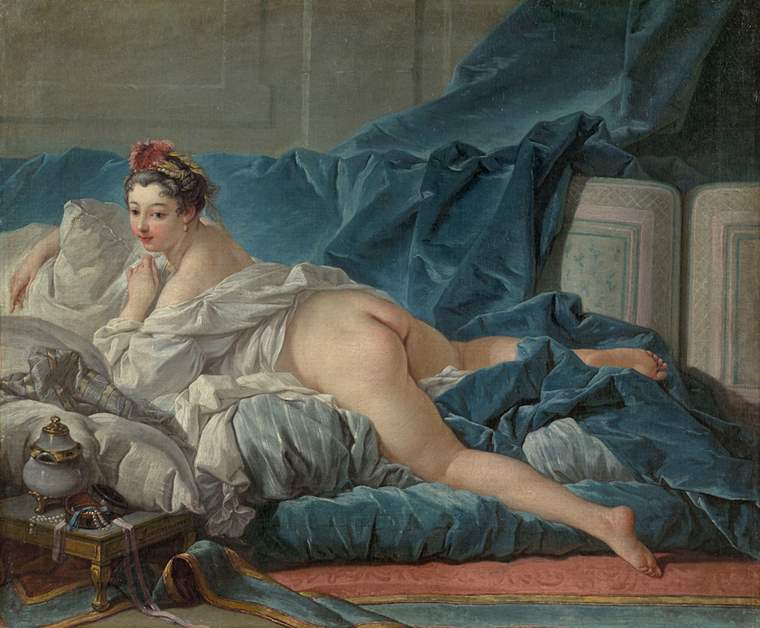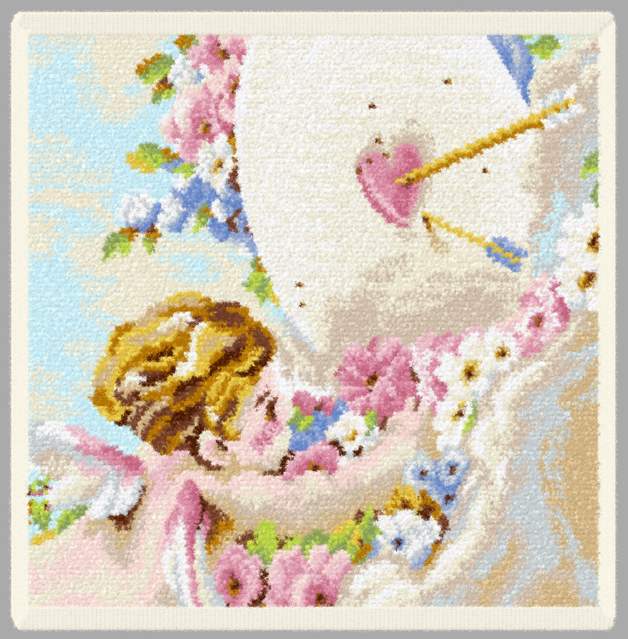The National Art Center, Tokyo features masterpieces of "love" from the Louvre. Check out the must-see points before you go!
Exhibiting various forms of love by masters of beauty
The National Art Center © ©, Tokyo
The theme of this year's Louvre exhibition is ""Painting Love. Seventy-three works have been selected from the museum's rich collection to allow visitors to appreciate the various expressions of love in Western painting. In response to the theme of love, the museum offers a prologue and a tour of the museum in four chapters.
Greek and Roman mythology sometimes expresses a strong desire to possess everything about the beloved. In this chapter, we can see the falling in love, the use of one's own charms to seduce in order to win the other, and the tragic end of love. Also shown here are examples of interior decorations found in the palaces and residences of royalty and aristocrats that are inspired by Amor, the god of love.
Chapter 2: Under the Christian God
Parent-child love occupies an important place in the Christian view of love. Here we can see the theme of love that involves sacrificing oneself for the sake of the beloved. The ""Holy Family,"" which is also a model of parent-child love, and the ""Crucifixion of Christ,"" in which God the Father crucifies Jesus, his own son, are introduced.
● Chapter 3: Under Man: The Age of Temptation
In the 17th century, love between humans living in the real world flourished in the Netherlands. Here, we can see scenes of common people, men and women, huddled together in a tavern or trading in love, as depicted in Dutch genre paintings. Also included are 18th-century French paintings of upper-class men and women at fêtes galants (elegant banquets) and paintings of bourgeois marriages, couples, and families from the latter half of the 18th century.
Chapter 4: Pastoral Love and the Tragedy of Romanticism in 19th Century France
After the French Revolution, there was a growing trend toward marriages based on love that did not depend on status or family origin. The paintings depict the love of naive young people and romantic, idyllic love that was favored during this transitional period. Also featured are stories of love between young men, the neoclassical ideal, and the doomed love themes of Romanticism.
Three must-see masterpieces to be picked up and introduced.
Sassoferrato, The Sleeping Child Jesus, c. 1640-1685 Louvre Museum, Paris Photo©RMN-Grand Palais (musée du Louvre) / Stéphane Maréchalle / distributed by AMF-DNPartcom * All rights reserved.
François Gérard, Amor and Psyche, 1798, Louvre Museum, Paris Photo RMN-Grand Palais (musée du Louvre©) / Tony Querrec /distributed by AMF-DNPartcom* All Rights Reserved.
François Boucher, Odalisque with Brown Hair, 1745 Louvre Museum, Paris Photo RMN-Grand Palais (musée du Louvre©) / Tony Querrec / distributed by AMF-DNPartcom * All rights reserved.
Masterpiece Fragonard's "Kan-nuki" comes to Japan for the first time in 26 years!
Jean=Honoré Fragonard, Kannuki, c. 1777-1778 Photo RMN-Grand Palais (musée du Louvre), Paris, Photo©/ Michel Urtado / distributed by AMF-DNPartcom *All rights reserved.
Fragonard's masterpiece, ""Kan-nuki,"" is highly regarded as one of the greatest treasures of French painting. 18th century France depicted cheerful and light scenes of upper-class men and women engaged in love games. Among them, ""Kanuki"" is a unique masterpiece that overflows with tension and eroticism, while at the same time being the height of elegance.
The ""kan-nuki"" refers to the lock on the door depicted in the upper right corner of the painting. The woman surrenders herself at the moment the man puts the can opener on the door, and the expression on her face, which can be taken as either bewilderment or euphoria, is brilliantly depicted. It reflects the momentary movement of her heart. Note how the paintings are interspersed with objects that symbolize the lovemaking of a man and a woman.
Fun only for visitors. Museum goods and collaborative menus are also not to be missed!
Sarutahiko Coffee Love Louvre Blend Drip Bag Coffee 1,296 yen (tax included) ©NTV
Feiler Handkerchief 2,970 yen each (tax included) ©NTV
Feiler Handkerchief 2,970 yen each (tax included) ©NTV
The handkerchief will be on sale in early May.
During the event, collaboration menus will be available at cafes and restaurants in nearby Tokyo Midtown. Sweets, smoothies, salads, and pastas with hearts and pink motifs will satisfy both your eyes and your stomach.
https://www.ntv.co.jp/love_louvre/
Opening hours: 10:00-18:00
*Open until 20:00 every Friday and Saturday
Admission until 30 minutes before closing
Closed: Tuesdays
However, the museum will be open on Tuesday, May 2.












